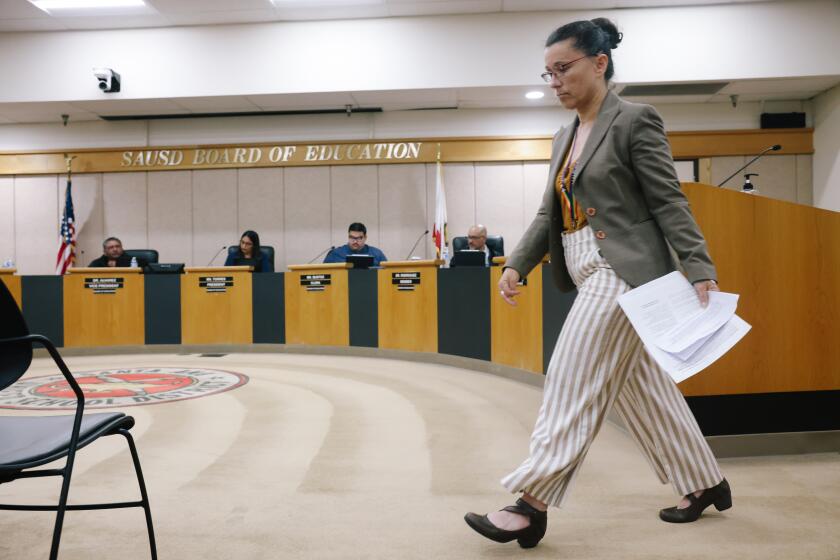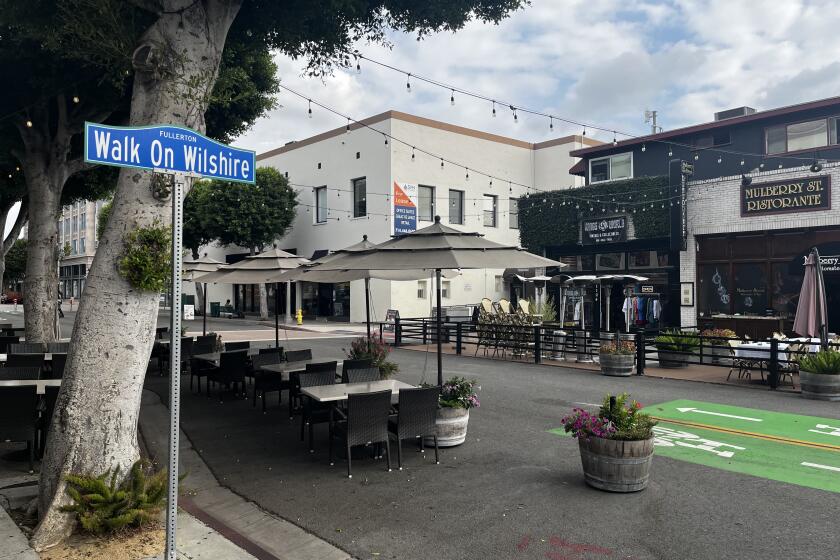Nixon Library will open its Apollo 11 exhibit to the public on the 50th anniversary of the moon landing
- Share via
Many older Americans recall exactly where they were at 10:56 p.m. EST on July 20, 1969, when Neil Armstrong set foot on the moon.
Minutes later, President Nixon, in office six months to the day, spoke to Armstrong and fellow astronaut Buzz Aldrin from an olive-green, push-button phone on his desk in the Oval Office.
“For every American, this has to be the proudest day of our lives,” the president told them in history’s longest distance phone call. “Because of what you have done, the heavens have become a part of man’s world.”
That phone is among the treasures in “Apollo 11: One Giant Leap for Mankind,” an exhibit on display at the Richard Nixon Presidential Library and Museum through Jan. 12. Admission to the Nixon Library and the exhibit will be free on July 20 to commemorate the 50th anniversary of the historic event.
AT&T will cover the cost — a nod to the fact that BellComm helped coordinate the phone call between Nixon and the astronauts, said Joe Lopez, Nixon Foundation communications director.
There will also be an “Apollo 11 Space Race 5K” at 8 a.m., where participants are encouraged to don space attire.
“There’s a reason the whole country is looking back 50 years this month,” said Hugh Hewitt, the noted talk-radio host, author and columnist who started as Nixon Foundation president on Monday. “It was a peaceful high point in the American century.”
Some artifacts in the exhibit already belong to the Nixon Library. Others are on loan from the Johnson Space Center in Houston and Smithsonian National Air and Space Museum in Washington, D.C.
“There are some really good photographs here from the day of the launch,” Lopez said.
The walk-through exhibit, curated by designer William Maple and researcher DeSimone, begins with displays and documents chronicling the Cold War and the space race.
A video loop plays President Kennedy’s “We choose to go to the moon” speech, delivered on Sept. 12, 1962, a sweltering day in Rice Stadium in Houston. Other artifacts include Buzz Aldrin’s penlight used in the Lunar Module and his Apollo 11 crew patch; moon rocks acquired from the Apollo 15 and 17 missions; a NASA X-15 silver pressure suit used to train Armstrong and America’s first astronauts in the 1950s; and a Presidential Medal of Freedom Award presented by Nixon to Michael Collins, the third Apollo 11 astronaut.
Among the more fascinating, albeit eerie, documents is the undelivered “In event of a moon disaster” speech composed by White House speechwriter William Safire.
The first typewritten sentence reads: “Fate has ordained that the men who went to the moon to explore in peace will stay on the moon to rest in peace.”
Exhibit visitors can imagine what it would have been like to watch the broadcast of the moon landing by sitting in a mock 1969-era living room consisting of a sofa, coffee table and a black-and-white console television. Visitors can also take one small step and experience 360-degree virtual reality technology placing them on the lunar surface on July 20, 1969, with Armstrong standing nearby.
For more information on the “Apollo 11” exhibit and associated events, go to nixonlibrary.gov.
Support our coverage by becoming a digital subscriber.
Lou Ponsi is a contributor to TimesOC. Follow him on Twitter at @L_Ponsi.
For more news and features about Orange County, visit TimesOC.com or follow us on Twitter @timesocofficial.
All the latest on Orange County from Orange County.
Get our free TimesOC newsletter.
You may occasionally receive promotional content from the Daily Pilot.



